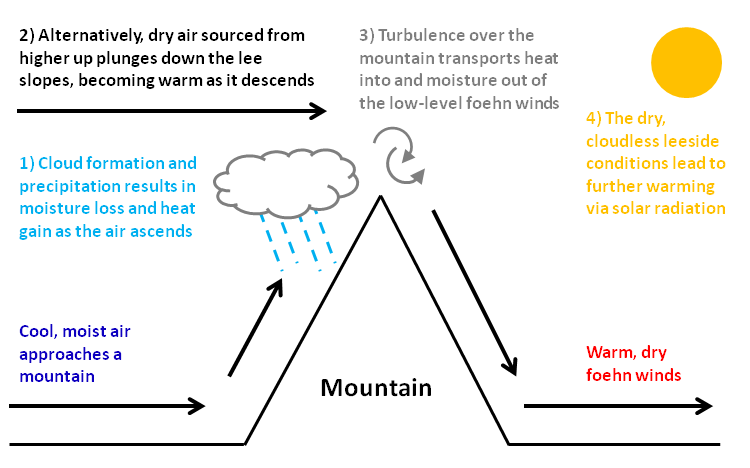|
Zonda Wind
Zonda wind ( es, viento zonda) is a regional term for the foehn wind that often occurs on the eastern slope of the Andes, in Argentina. Formation The Zonda is a dry wind (often carrying dust) which comes from the polar maritime air, warmed by descent from the crest, which is approximately above sea level. It may exceed a velocity of . The Zonda wind is produced by the northeastward movement of polar fronts, and although is hot and dry at the low-lands, it is the main mechanism for snow precipitation at the high altitude chains, where it looks as ''viento blanco'', reaching speeds sometimes over 200 km/h. Thus, instead of being a snow-eater, this wind is particularly important for this arid region, as it is connected to the buildup of the winter snow cover and accumulation over the scarce local glaciers. Occurrence While this type of föhn wind may occur over most central parts of western Argentina, its effects are more impressive in La Rioja, San Juan, and northern Mendoza pro ... [...More Info...] [...Related Items...] OR: [Wikipedia] [Google] [Baidu] |
Foehn Wind A Foehn or Föhn (, , ), is a type of dry, relatively warm, downslope wind that occurs in the lee (downwind side) of a mountain range. It is a rain shadow wind that results from the subsequent adiabatic warming of air that has dropped most of its moisture on windward slopes (see orographic lift). As a consequence of the different adiabatic lapse rates of moist and dry air, the air on the leeward slopes becomes warmer than equivalent elevations on the windward slopes. Foehn winds can raise temperatures by as much as 14 °C (25 °F) in just a matter of hour |

